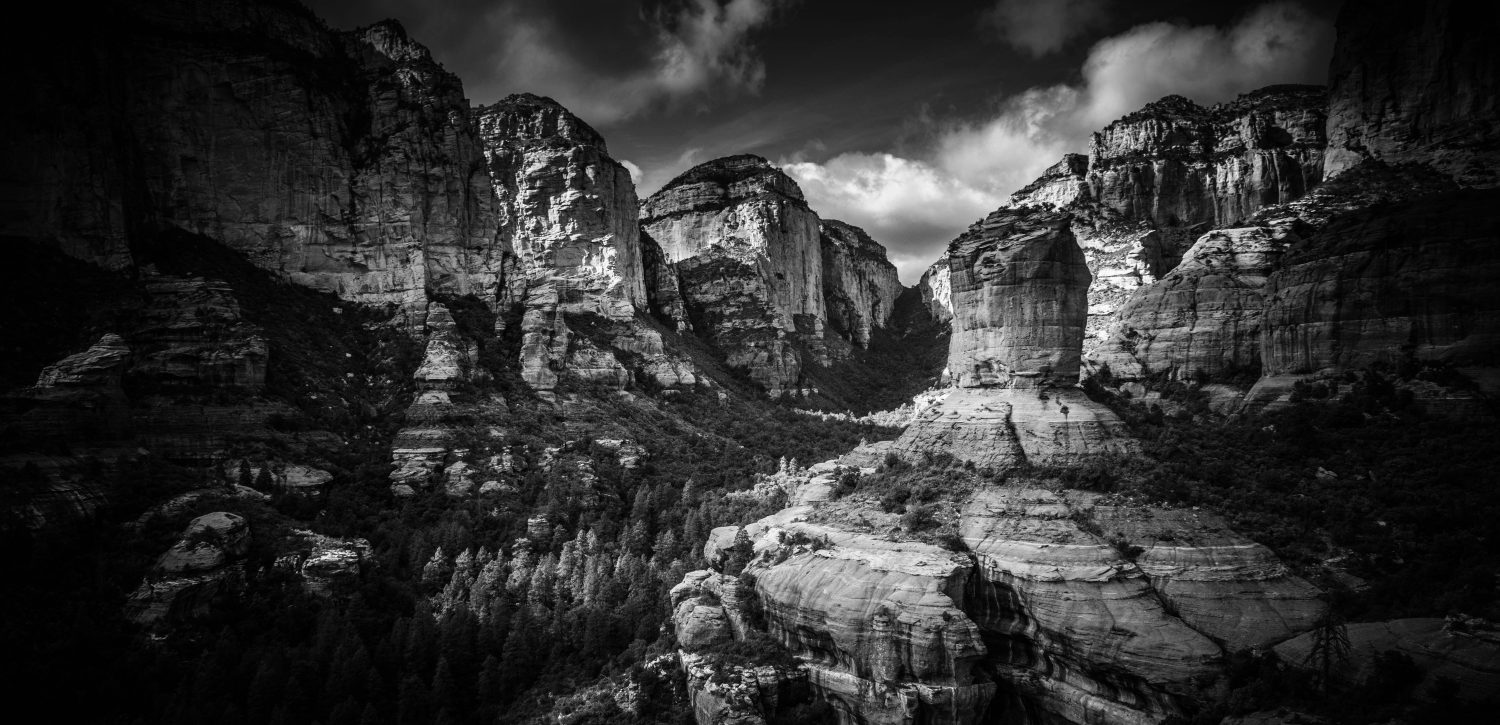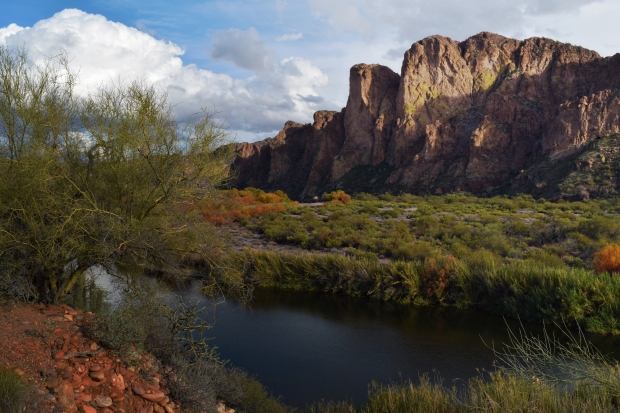Kluane Ice Cave-Yukon
It was 10:27 in the morning. My hazy eyes stared at my phone in disbelief, which quickly escalated to annoyance.
It was one of my final days visiting family in the Yukon, and as per tradition, I had planned a mother-daughter hike, but the trail head to this particular 12 kilometer hike was located over two and a half hours away.
My mother was gleefully cooking nutella and strawberry stuffed crepes in the kitchen, and as I had expected, she woke up at the crack of dawn.
“I wanted to let you sleep,” she said with a sly grin. “We’ll go tomorrow.”
It was October 11th and the first day of snowfall in Whitehorse. Winter had come early this year and today was the only day for the rest of the week that offered sunshine instead of bitter temperatures and unpredictable blizzards. No matter how much she wanted to get out of it, if we were going to go, it would have to be today.
I had originally planned on visiting the Mendenhall ice cave in Alaska. The thought of climbing under those cerulean shards of crystal was something I just had to knock of my bucket list while being in the north. However, no ferries were running from Skagway to Juneau for the rest of the week, so a friend had suggested I visit an ice cave under Mount Archibald near the village of Haines Junction instead. She had visited the cave by snowmobile the previous winter and assumed that the hike would take about four hours in total. We were robbed for time, but I anticipated that if we were to leave now we could make it there and back just before sunset.
Finding the trail-head was like a treasure hunt in itself. I was told it began two kilometers past Bear Creek and would be marked with a piece of pink ribbon. I passed the creek and noticed shortly after two pieces of orange ribbon bordering a little dirt road. When I drove in, the road fragmented into three separate trails, this could not be our path. I turned around and started back towards Bear Creek, this time, making sure to measure two kilometers exactly. I did, and still, nothing.
I putted forward, keeping my eyes peeled to the bushes to my left. Finally I noticed one flimsy piece of tiny pink ribbon attached to a branch high on an aspen. I was reluctant, but when we parked and walked closer, I noticed a second piece of ribbon leading into the forest like a trail of breadcrumbs, this was it.

After about .5 kilometer of hiking through the marshy wood, we reached a wide gravel creek bed, laced with a frosty winding stream. We noticed that beyond this point there were no more pink markers, so we took note of the surrounding landscape for our return trip. I remembered the angles of the mountain range beside me and the pale, dead tree that was planted in the middle of the creek bed. It was now 3 p.m.

The hike was undoubtedly serene. The rushing water hummed through ice shards like wind chimes as we bounded over the slippery frost-licked gravel. The creek would snake left and right throughout the hike, forcing us into the barren brush, where pussy willows would whip our thighs and callous branches would scratch our faces. After enduring that twice, we decided to take off our shoes and cross the icy water bare foot. Our husky let out a temperamental yelp and paced along the bank several times before finally joining us across the water.
About an hour and a half in, my enthusiasm turned to concern. We had noticed several grizzly tracks walking in the same direction we were heading, but what was even more disturbing was that the sun had disappeared over the mountain and we were not even close to our destination.

The wind whistled along our path as we passed kilometer after kilometer of uncompromising terrain. It wasn’t long before the incline started to intensify, the temperature dropped and the creek bed narrowed. We crossed a broad curving bend of a sandy cliff side and far off into the distance we could see what looked like dark hole under an arctic blue ice bridge nestled in the center of two colliding peaks. We were still far from the cave, but the sight was already remarkable.

We trekked on, and our rocky path was soon traded with thigh deep snow and latitude had robbed the evening of any lingering warmth. I looked behind me and the shadows on the desolate peaks were rapidly chasing the remaining sunlight.

When we reached the cave the view was captivating. Glassy cubes of ice lined the entrance where parts of the cave’s ceiling had fallen and the deep blue frozen waves above us formed a peephole view to the powdery mountain ranges beyond.
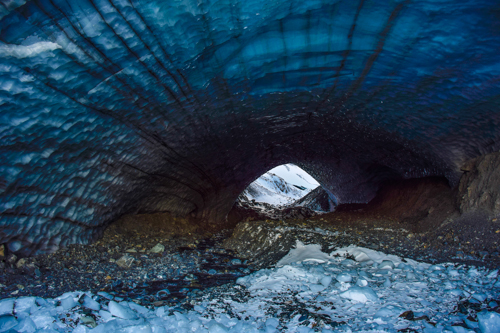
We didn’t stay long. It took us an hour and a half longer to get here than we had anticipated and we knew it would be a race against time to get back. We practically inhaled our lunches, changed into dry socks and were on our way. Our pace was much faster on our return trip as we were no longer hiking on an incline, but we were still not moving as fast as we would have hoped. The rough terrain made it very difficult to be agile.

After once again being pushed into the unforgiving bank, we became fed up and started to trek through the creek with our shoes on to save time. The icy chill ached right into the bone. It didn’t matter, the light in the sky dimmed and we were hit with the harsh reality of our situation when we noticed our flashlight was not working. I turned on my mom’s phone to use its flash, but it died almost instantly. Fortunately I was sure to keep mine fully charged for this exact reason, but my confidence died when I noticed the flash on my phone would not turn on. It was too cold for it to function. I strapped it to my bare skin under my shirt to try to warm it and continued on in the moonless night. Paranoia got the better of me when I realized how blind I was to whatever wildlife lurked in these woods. I slid my finger over the bear spray strapped to my bag.
We analyzed the surrounding mountain ranges, but could barely make out their shape. I began to question if we had already come too far, so I walked closer to the bank and thought that I could make out a trail. We started on it, with our hands flimsily waving in front of us, but soon realized that we were wrong and had to turn back to the creek bed.
We walked another .25 kilometer and I tried to use the flash on my phone once again. It wouldn’t remain constant with the video light, but it did work when I took photos, and I could get glimpses of what was in front of me. I saw a flash of what looked like eyes, but the photo was too blurred to make it out.

The exposure to the elements was beginning to take its toll; we were exhausted, cold and beginning to feel hopelessly lost. Then, miraculously, my video light turned on and just above us was that familiar small pink ribbon. We shrieked with glee. Then, naturally, the light was out again.

It was too dark to find the entrance to the trail, but we knew that if we walked straight into the forest, we would eventually reach the highway. The tangled mass of coarse birch and willow branches clawed at our faces as we forced out way over and under trees. I pulled out my phone once again and the light came on, but the forest was so dense that I could only see less than a meter in front of me. I heard a howl of distress and noticed our husky was no longer by our side. We called out and I panicked knowing that my light would die again at any moment. We could hear her breaking through trees and yelping but she couldn’t find us. I pushed towards the noise and came across two familiar ponds-we had found our way back to the trail. I could hear cars in the distance, when our husky crashed through the bushes behind us with grateful bark. We started running and there it was, our vehicle cloaked in glittering frost as the northern lights danced above us.
I realized the beauty of the north is both bold and unforgiving. You’re dwarfed by the land and with a little lack of preparation, the feeling of life’s fragility and vulnerability is inevitable. For now, I yearned desperately for civilization, but I knew my subconscious call for this desolate, unpredictable and isolated land would always return.
Rio de Janeiro, Brazil
Take in what could arguably be the most indefatigable, spirit-lifting experience of your lifetime, during the most prevalent Carnival of the year in Rio de Janeiro.
 An average on two million people a day flood Rio’s streets, drenching them in energy and sound, which is both contagious and euphoric. Presentations of samba dancing groups consume the attention of millions, as they express a choreographed story to the beat of rhythmic authentic Portuguese music.
An average on two million people a day flood Rio’s streets, drenching them in energy and sound, which is both contagious and euphoric. Presentations of samba dancing groups consume the attention of millions, as they express a choreographed story to the beat of rhythmic authentic Portuguese music.
Each samba school group showcases their yearlong dedication to their artistically crafted float and costumes. Their attention to detail and commitment to creating aesthetically flawless and symphonious collective unit is truly awe-inspiring.
After the presentations, retreat to coco bongo beach, where the crowd of dancers never dulls until the sun rises. Sprinkled along the beach, are vendors offering Brazil’s national drink, the thirst-quenching caipirinhas, which are muddled with an assortment of fresh fruit such as apples and coconuts and cachaça liquor.

Jervis Bay, Australia
When I think of a secluded paradise, I think of Jervis bay. The white sand is as soft as flour and stretches on for miles. The day begins as I take in the harmonious balance between the animals and the people that reside there. Red kangaroos lounge in the sand without fear of being harmed. Swimmers are joined by their dogs for their morning sprint, and in the distance, pods of dolphins break the surface in elegant leaps.
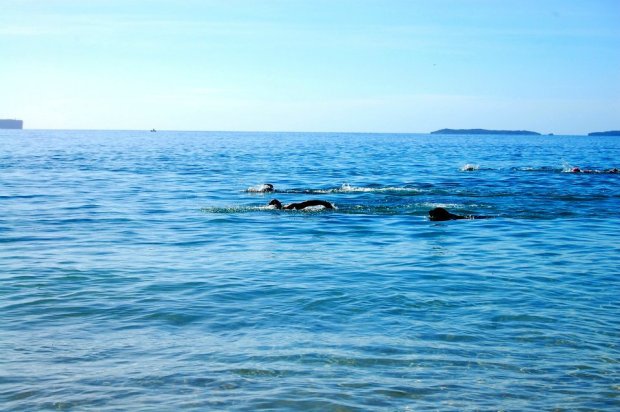

The rock formations create salty beds, and as you sit within, the waves crash in and cleanse you. They fill and drain through carved tunnels to the sea.

I dive in. The light above me dances like ribbons in the wind. The serene calmness of the liquid dunes above revive those in the deep.
Heber, Arizona
(Post published on Arizona Highways Blog)
A golden stallion with a dual-shaded mane watches approaching photographers with a cautious eye. He calmly moves between his company of four horses, most of which are smaller than him, and the eager photographers, who are clumsily stumbling over logs and rocks in a desperate effort to get a closer look.
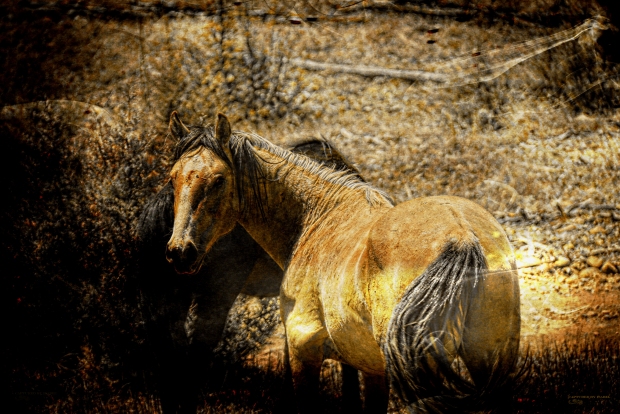
Photographers from all over the country are drawn by the chance of capturing the serenity of a wild horse herd amid the green pines of the lush Black Mesa region of the Apache-Sitgreaves National Forests.
Here, the Heber wild horse herd is a natural attraction for locals and tourists alike. Some claim that the herd is a historical symbol of the area’s history, descendants of the mustangs that were brought to the area by Spanish explorers. But some view the herd as a complication and a nuisance. Many ranchers argue that the horses are overgrazing the area, which presents problems for their cattle.
Due to the continued conflict between wild horses and ranchers all over the country, the federal Wild Free-Roaming Horses and Burros Act was passed in 1971 to protect the animals from potential roundup and slaughter. However, the U.S. Forest Service argues that the current Heber herd is likely made up of of mostly abandoned horses without bloodline ties to the original herd.

Liard Hotsprings-British Columbia, Canada
(During my six day drive from Whitehorse, YT, to Phoenix, AZ)
 At two in the morning I finally decided to pull in for the night. I was anxious and exhausted from the road, as I fumbled with my flimsy tent poles in my small pool of light from my headlights. Once my tent was assembled, and the twigs cleared from my sleeping bag, I turned off the lights and walked off into the faded, damp darkness. A walked along a small wooden walkaway and through the secluded swamp with nothing but the sound of grasshoppers and my shoes clicking on the rotten wood below me.
At two in the morning I finally decided to pull in for the night. I was anxious and exhausted from the road, as I fumbled with my flimsy tent poles in my small pool of light from my headlights. Once my tent was assembled, and the twigs cleared from my sleeping bag, I turned off the lights and walked off into the faded, damp darkness. A walked along a small wooden walkaway and through the secluded swamp with nothing but the sound of grasshoppers and my shoes clicking on the rotten wood below me.

In my hands my half-frozen fingers clasped the only weapon I could find, a small ice chipper for my car window. I followed the walkway for what seemed like an unbearably long time in the darkness until I reached the Liard river hot springs. In the dim light the river’s water appeared emerald green, alive with thick flora, grasping to every surface. I noticed a much older man sitting alone in the springs, perched on a slime-coated bench. His soft silhouette was troubling and he glanced in my direction for a moment too long. I tightened my grip on the ice chipper. I swam to the hotter side of the river, which was fed from a boiling mass below. I realized that most people that came here during this time of year are truckers. Someone that devotes their life to driving an uninhabited road would likely seek more solitude than me. That thought relaxed me as I let the remedial water swallow me.
Havasupai Falls, Arizona

Cradled by the bold red cliffs of the Grand Canyon is the isolated village of Supai, where thousands of eager travelers pass by every year to reach the world-famous blue-green water of Havasu Falls. However, what they often overlook is the village’s lifeline — its mules.
Supai is one of the last indigenous villages in the United States without access to paved roads, and although a helicopter is available to deliver supplies to the village, it’s almost completely sustained by the sweat and vigor of its hardworking animals.
The village can be reached by traveling along an 8-mile trail interlaced with boulders, pools and the breathtaking cliffside views that only the Canyon can offer. The trail is rigorous, and everything that is carried in — food, mail, garbage and the luggage of travelers — must also be carried out.
Reaching the falls is no easy task for the untrained hiker. The hike is approximately eight miles through the rigorous terrain of the Grand Canyon. Every year, many hikers become stranded from exhaustion and need to be carried out by horseback.
The mules are often seen carrying up to three coolers on their backs full of heavy food and beverages for the return trip 16 miles in temperatures as high as 120 degrees Fahrenheit. At the beginning of the hike, on Hualapai Hilltop, travelers see the horses sweat-drenched, with knees shaking, knowing that they still need to make the vigorous return trip with just as much weight on their backs.
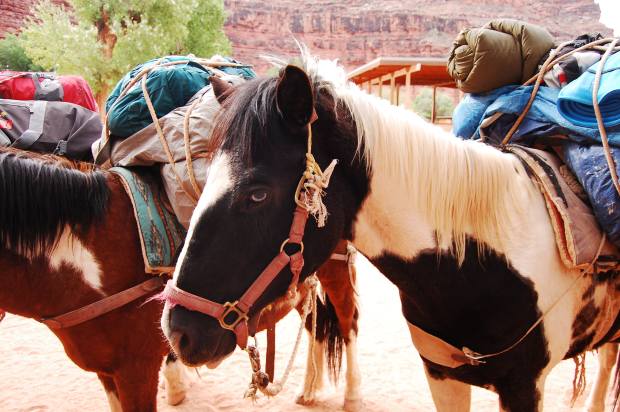
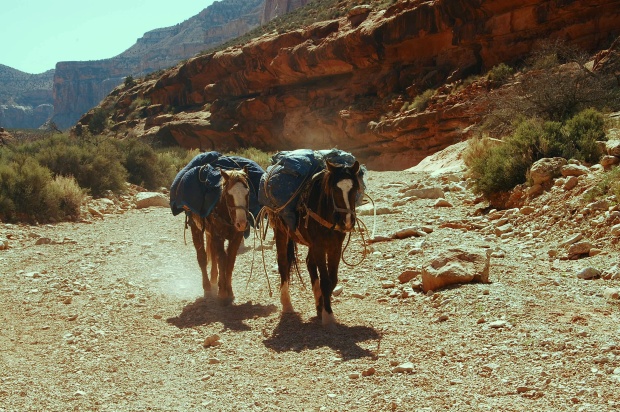
For the adventure-seekers that are planning a trip to Supai this summer, plan accordingly and pack light. For those who do choose to travel with heavy luggage, the helicopter is the better option. Not only the more affordable choice, as the riders charge $95 per bag, but it also saves the animals from a grueling and strenuous trip.
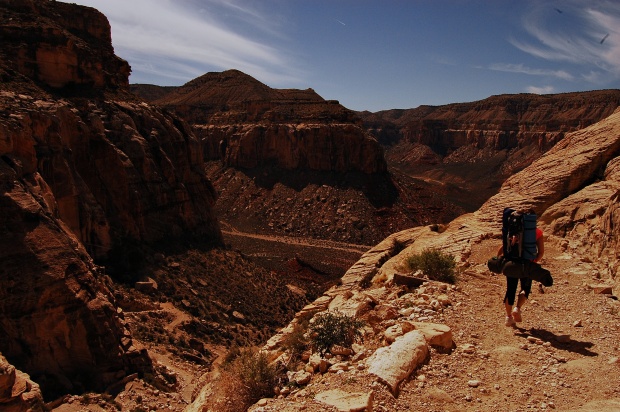
Whitehorse-Yukon, Canada
Whitehorse looks like you’ve opened a door into the past. It’s time-withered buildings covered with chipped murals of can-can dancers give an authentic feeling of the gold rush. The city offers little to those with a lavish taste, but it is a haven for the rare breed that seek solitude. The city is blanketed in barren wilderness that is as silent, lonely and forgotten as a graveyard. The frozen, pine scented air burns my skin and stings my lungs with every inhale. 

Out of the city limits, I look down at piercing eyes behind the sparkling frosty fur of a red husky. He sits on an icy bed of white, as he stares with eager anticipation for companionship and guidance. I remember Richard Turner’s words “we allow friends into our company, pets we allow into our solitude,”and it feels less alone.

